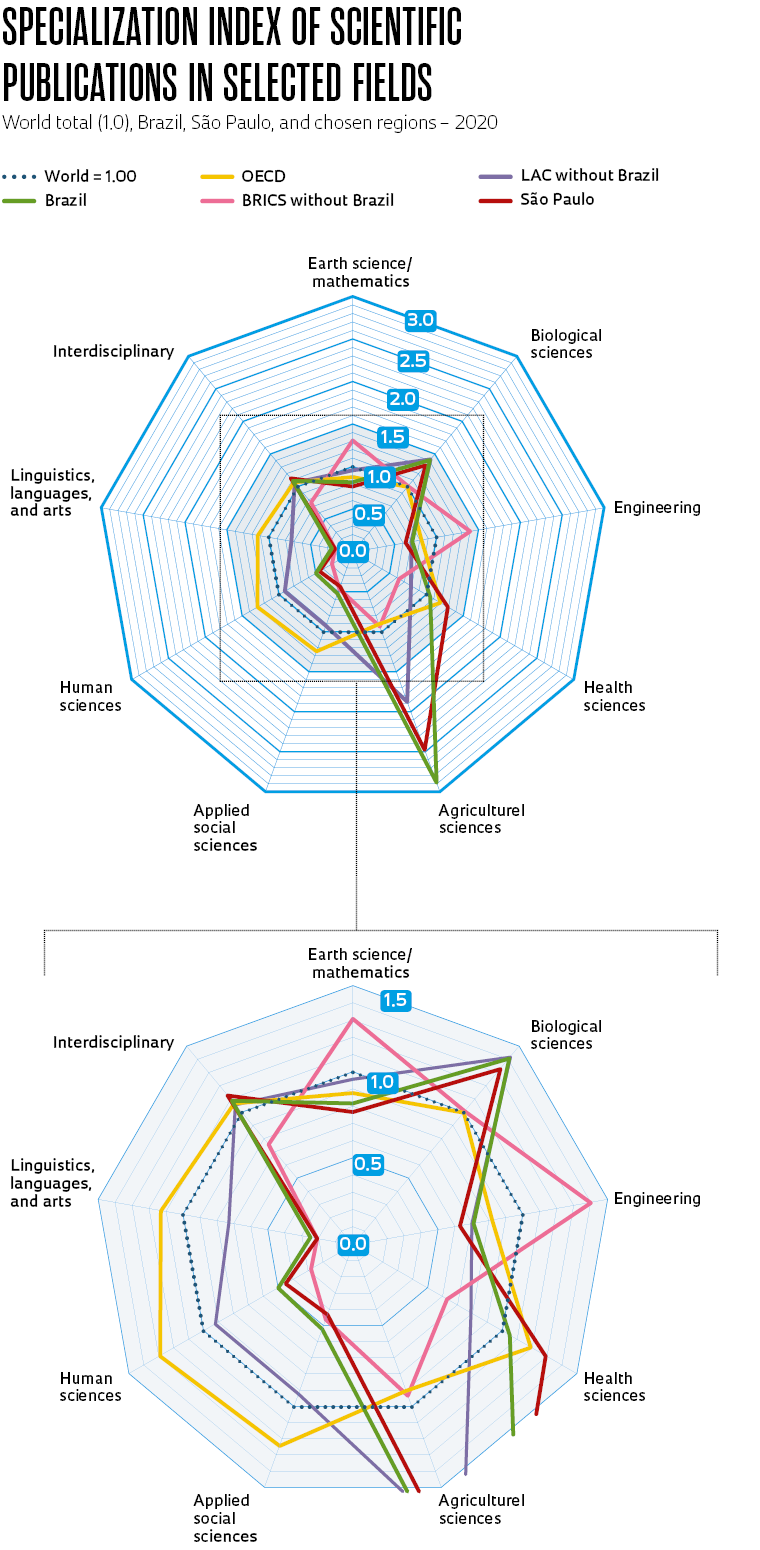- One way to measure the extent to which a given country or region favors certain fields in its scientific publications is the Specialization Index (SI). The SI represents the ratio between the share of a given field in the total publications of a country and the share of the same field in all global publications.
- In 2020, for example, 18,246 of the total of 68,401 scientific articles1 published in Brazil related to the field of health sciences. The ratio between these values is 0.267. The equivalent ratio for the world total was 0.255. The SI for health sciences in Brazil was therefore 1.05 in 2020 (calculated from 0.267/0.255). What this means is that Brazilian scientific output is slightly more concentrated in this field than the global average
DATA
Specialization Index

- The graphs above show the SI of FAPESP’s nine major fields of knowledge2 in Brazil, São Paulo, and other country groups3. The SI for the world total is always equal to 1 for all fields, represented by the regular dotted polygon in the two graphs.
- Agricultural science is the standout field both in Brazil and in São Paulo, with SI values of 2.88 and 2.42 respectively, placing it far ahead of the other groups of selected countries. Latin America and the Caribbean (without Brazil) comes closest, but its SI is still below 2
- In contrast, the field with the lowest SI, both in Brazil and São Paulo, is linguistics, languages, and the arts. With SIs of 0.25 and 0.21 respectively, the field’s presence in publications in these regions is much lower than in the other country groups, except for BRICS without Brazil
- For biological sciences, Brazil and São Paulo have SIs of more than 1, as does Latin America and the Caribbean without Brazil. Also of note is São Paulo’s SI for health sciences (1.29), which exceeds Brazil as a whole (1.05) and other groups of selected nations
- In engineering and earth sciences/mathematics, both Brazil and São Paulo had SIs of less than 1, in contrast to the other groups, especially the other BRICS nations, which scored highly in these fields.
NOTES (1) Publications classified as articles, proceedings papers, and reviews by the Web of Science/Clarivate and included on the Incites/Clarivate platform (2) FAPESP major fields: 1. Earth science/mathematics; 2. Biological sciences; 3. Engineering; 4. Health sciences; 5. Agricultural sciences; 6. Applied social sciences; 7. Human sciences; 8. Linguistics, languages, and arts; and 9. Interdisciplinary (3) The adopted country groups were: OECD, BRICS without Brazil, and Latin America and the Caribbean (LAC) without Brazil. The BRICS countries are: Brazil, Russia, India, China, and South Africa. The 33 countries in the LAC group are listed by the UN at https://www.cepal.org/en/estados-miembros
SOURCES Incites/Web of Science/Clarivate, data extracted in September 2021
Republish
